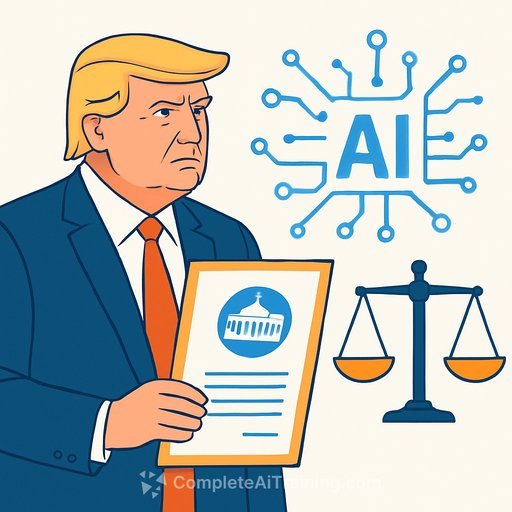Parliamentary Push in India: Legal Toolkit to Tackle AI-Generated Fake News
A parliamentary committee in India, chaired by BJP MP Nishikant Dubey, has urged the government to create clear legal and technical controls to curb AI-generated misinformation. The draft report backs a balanced path: use AI to detect misinformation while recognizing its role in creating it.
The committee calls for inter-ministerial coordination, licensing for AI creators, mandatory labeling of synthetic content, and firm consequences for those who spread falsehoods. Human review remains central despite advances in automation.
What this means for legal teams
- Licensing and registration: Expect thresholds for model developers, API providers, and high-scale deployers. Likely obligations include KYC, audit logs, incident reporting, and cooperation with lawful requests.
- Mandatory labeling: Synthetic media may need visible and machine-readable disclosures, with provenance signals and watermarks preserved end-to-end.
- Platform duties: Intermediaries and publishers could face tighter due-diligence standards, faster takedown timelines, and penalties for non-compliance.
- Human oversight: "Human-in-the-loop" review for sensitive or high-risk content will be expected, with documented review trails.
- Enforcement: Stronger civil and criminal exposure for willful dissemination of fake news, plus blocking orders and monetary penalties.
Key legal questions to prepare for
- Definition and scope: What qualifies as "AI-generated" and "fake news"? How will intent, recklessness, or negligence be assessed?
- Attribution and evidence: Standards to link content to a developer, deployer, or publisher; admissibility of watermarking/provenance signals; chain-of-custody for digital evidence.
- Intermediary liability: Interaction with existing safe-harbor principles under the IT Act framework and the Intermediary Rules, plus any carve-outs for verified provenance.
- Proportionality and speech: Ensuring measures meet necessity and proportionality tests under Article 19(1)(a) and established constitutional doctrine.
- Extraterritoriality: Obligations on foreign AI services accessible in India; service of process, data access, and compliance gateways.
- Due process: Notice, appeal, and audit rights if licenses are suspended or content is taken down.
Compliance playbook to start now
- Map AI supply chain: Identify where your organization creates, edits, amplifies, or hosts AI-generated media. Assign owners and escalation paths.
- Provenance by default: Implement content credentials, watermarking, and cryptographic signing where feasible; preserve metadata across editing and distribution.
- Disclosure standards: Introduce clear labels for synthetic text, images, audio, and video; include alt-text and machine-readable tags.
- Review protocols: Stand up human review for high-reach and high-risk content (elections, health, finance, public safety) with documented checklists.
- Contractual safeguards: Add representations, warranties, audit rights, and indemnities for AI vendors and content partners; define incident reporting SLAs.
- Retention and logs: Maintain version history, model prompts, outputs, and moderation decisions to support investigations and court orders.
- Playbook for takedowns: Standardize legal review, priority queues, and response templates for notices, including cross-border coordination.
- Training and access controls: Limit generative tools for sensitive workflows; provide role-based training and periodic refreshers.
Technology stack to consider
- Provenance and watermarking: Adopt open standards such as C2PA for content credentials.
- Detection and triage: Use ensemble detectors for deepfakes and synthetic text, paired with sampling and human verification.
- Policy enforcement: Deploy policy engines that block or flag unlabeled synthetic content and strip uploads lacking provenance signals.
Government coordination
The committee favors inter-ministerial action-expect roles for MeitY, I&B, Home, and Law-to align licensing, labeling, and enforcement. Legal teams should watch for consultations and draft rules, especially around intermediary due diligence and synthetic media disclosures.
For current policy context, monitor official updates from MeitY.
Risk and enforcement posture
- High penalties for willful dissemination; repeat violations may attract aggravated consequences.
- Regulatory audits likely for large platforms and news publishers.
- Courts will look for documented controls, speed of response, and cooperation with lawful directions.
Action items for General Counsel and Compliance
- Stand up an AI content policy covering creation, labeling, review, and takedowns.
- Run a gap assessment against expected licensing and disclosure regimes; budget for provenance tech.
- Update ToS, privacy notices, and partner contracts to reflect synthetic media obligations.
- Prepare briefing notes for the board on legal exposure and mitigation timelines.
Upskilling resources
- For team training on AI governance and compliance, see AI courses by job.
Your membership also unlocks:






